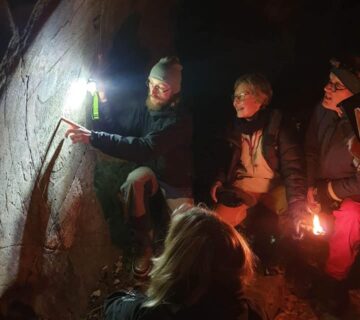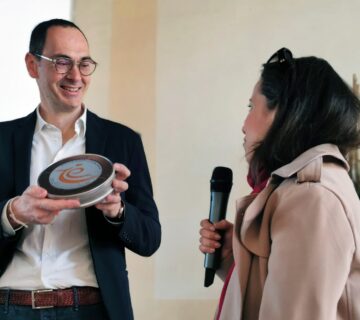On the keenly awaited publication of ‘Engaging your visitors: Guidelines for achieving excellence in heritage interpretation’ by Michael H. Glen, with Zeljka Miklosević, Roger White and many other contributors
Asking around during my first Interpret Europe Conference in Krakow for a definition of good heritage interpretation was beginning to feel like asking the proverbial Buddhist masters, ‘What is Zen?’ The answer was either another question or a zany little story aimed, like a banana skin, at throwing a little leap into my cognitive step. The interpreters I quizzed were not being evasive; they were just trying to explain something which cannot really be pinned down.
Good interpretation seemed to exist only in a moment of time, in the space between minds of the interpreter and visitors introduced to a phenomenon for the first time. You can feel when it is occurring, but you can’t dish out the same gambit somewhere else with another crowd. So what exactly is interpretation?, I asked myself. Calling it a ‘discipline’ made it sound too formulaic, calling it an ‘art’ put too much onus on an originator when the magic really occurs in the minds of the audience. A ‘skill’ or ‘technique’ neglects the crucial emotion and personality of the interpreter. I thought maybe the Guidelines, presented in draft form in Krakow would hold some answers for me.
Actually, Guidelines is not so much an elucidation of interpretation (there we go again), as a guide to creating the right conditions for the magic to take place. It’s a practical checklist for management and staff of heritage sites who are already convinced of interpretation’s virtues and wish to implement them to a high and professional standard in a project.
The Guidelines, now peer-reviewed and in polished form, provide a topographical overview for anyone planning an interpretation project and for revealing any blind spots. The scope is wide-ranging. Meta-considerations, such as purpose and quality-control, are joined by the nuts and bolts of staffing, financial viability, and access, along with a whole gamut of other aspects from storylines, design, service and communication to visitor-engagement and satisfaction follow on. The structure is simple and progresses naturally from establishing a project through to defining it, creating it, designing its content and sustaining it over the longer term. The clear language used in the Guidelines also provides us with a vocabulary of layman’s terms for talking to others about interpretation, so no dog-eared glossary in the appendix required here! And, oh yes – the bullet points are all in the form of bullet questions. But that, as I am now having to learn, is just the way of heritage interpreters.
The Guidelines are available to download on the IE-Homepage, at
www.interpret-europe.net/top/material.html
and also now available in Spanish, thanks to translation by Jorge Morales Miranda.
Angus Forbes is a landscape architect based in Berlin: www.angusforbes.net He likes to take an interpretation-based approach to his projects. You can get in touch with him at: forbesberlin@yahoo.com
To cite this article:
Angus Forbes (2017) ‘Question-Answers and banana skins’. In Interpret Europe Newsletter 1-2017, 10
Available online:
https://www.interpret-europe.net/fileadmin/Documents/publications/Newsletters/ie-newsletter_2017-1_spring.pdf




